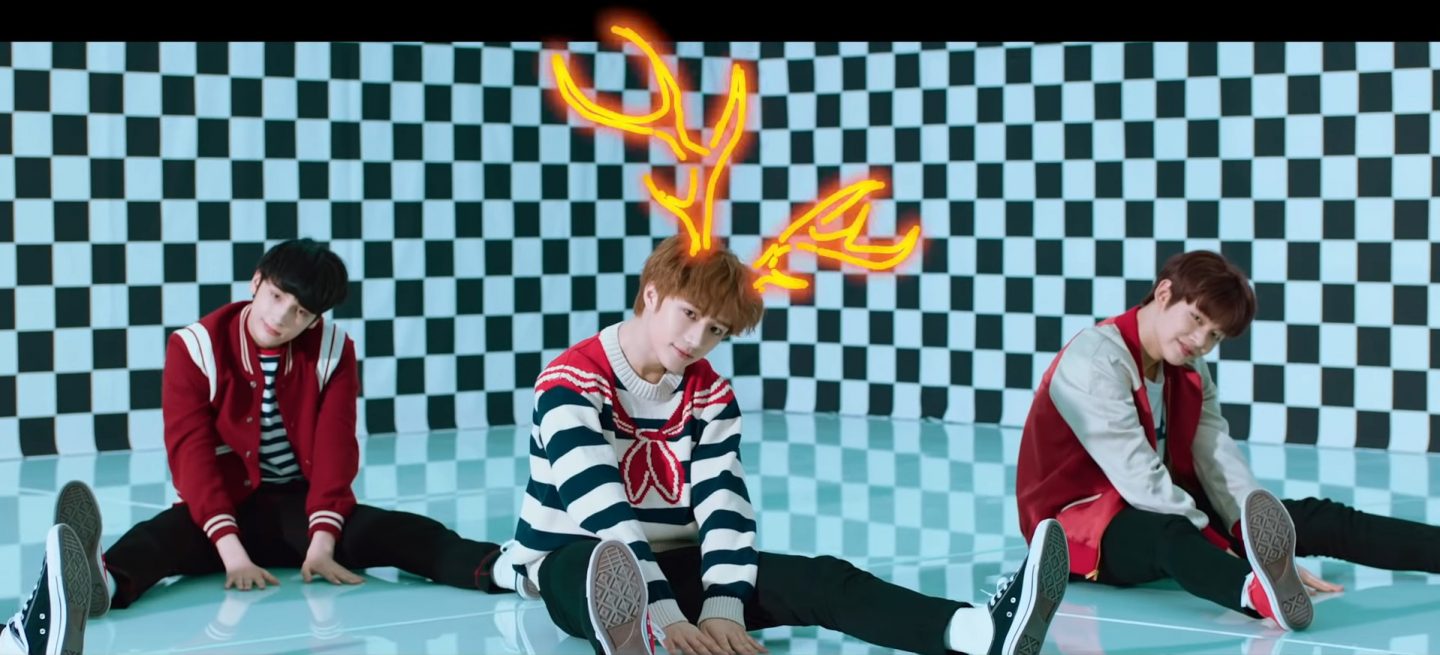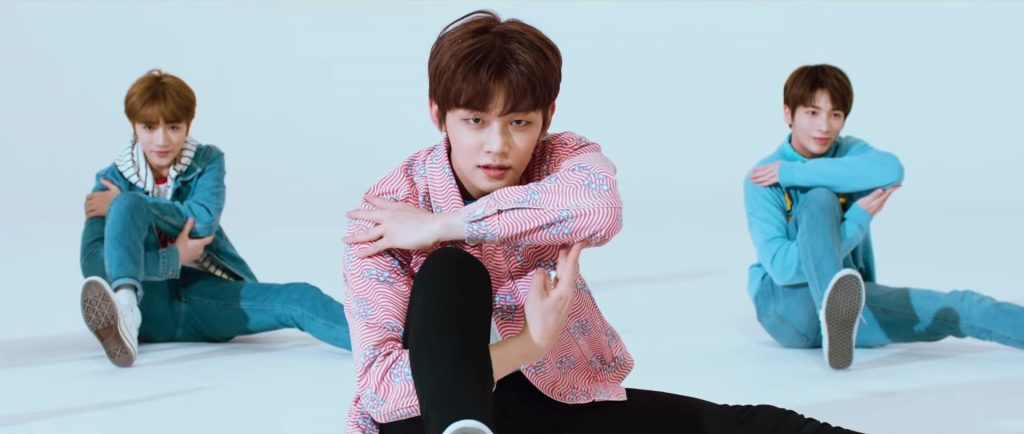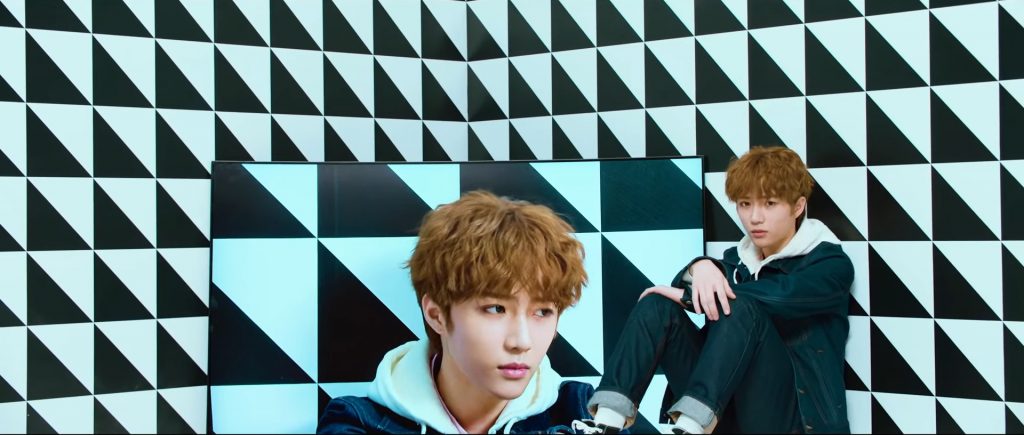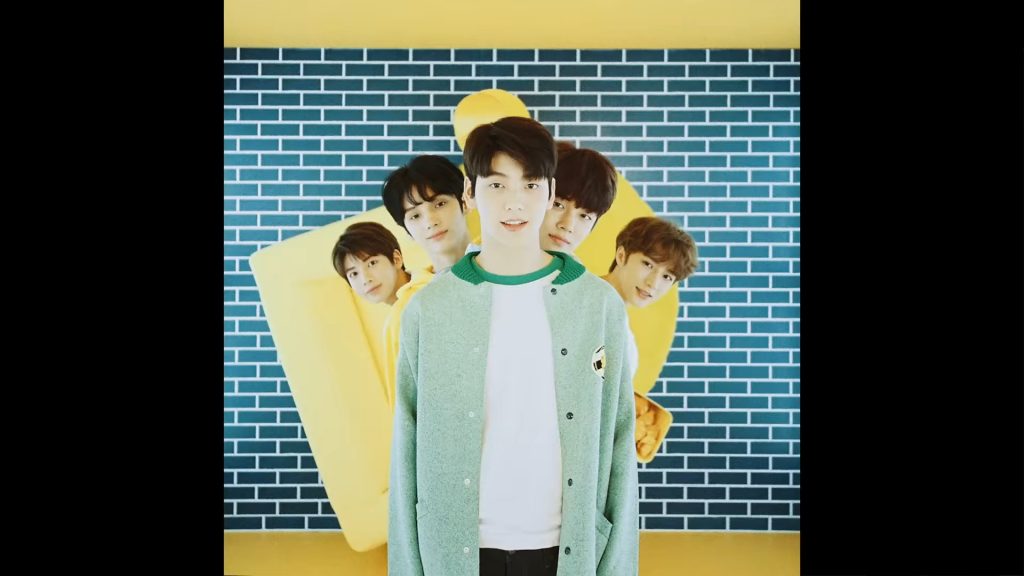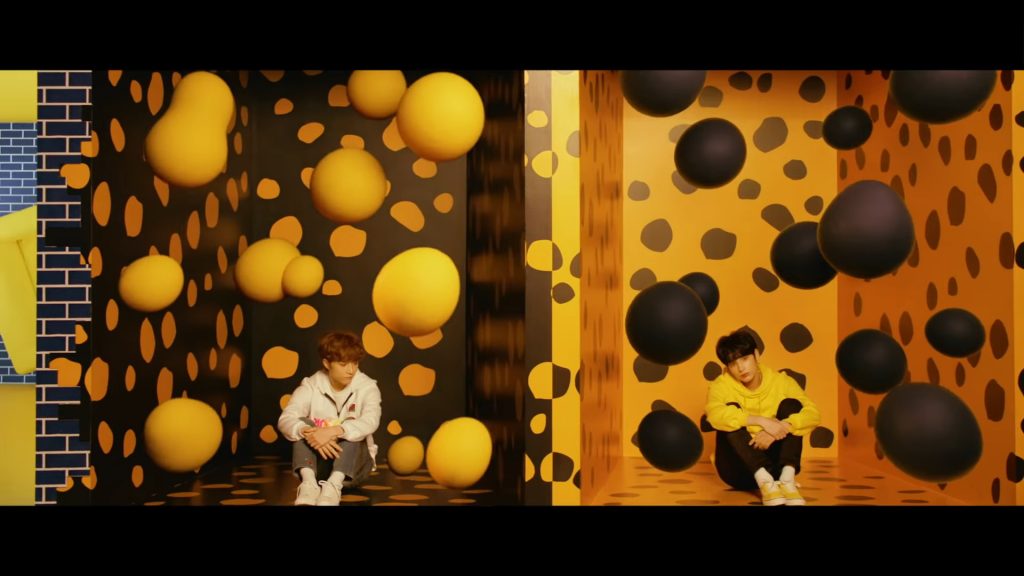
What makes a good debut? More than looking to the usual indicators of a commercially successful “monster rookie”—MV view counts, music show wins, brand recognition—it is crucial to consider several artistic qualities when assessing the strength of a debut. As I’ve discussed in an End-of-Year Review before, these qualities include the music (production, vocal ability, delivery), performance (dance skills, the group’s synergy), and concept (shown through the lyrics, music style, choreography, and MV). It isn’t necessary to have complete originality of concept; execution is key, and it should clearly bring out the identity or style that the group is going for.
As Big Hit Entertainment‘s first new group since 2013, TXT definitely garnered a lot of anticipation and curiosity. I was delighted to find out they were going for a fresh, youthful vibe. While they are treading familiar ground, there is just something timeless and captivating about the pure fun and energy exuded by groups operating within this niche. This concept has given rise to some of the strongest boy group debuts in recent years, including Astro, Golden Child, and Seventeen.

In the marketing reveals leading up to their debut, TXT were poised for a strong start. They benefited from the adoption of best practices that Big Hit has gleaned from years of managing and promoting BTS‘ musical growth. The most significant of these is having a relatable message conveyed through their music. TXT’s full name, “Tomorrow X Together,” and their accompanying tagline promise to unite artist and listener, however different they may be, in pursuit of a common dream.
From this, it is clear that in addition to a bright image well-tailored to fit their young age, TXT presents a potentially strong development arc. Unfortunately, the same cannot be said of the visual centrepiece of their debut, the “Crown” MV. The MV’s hodgepodge of styles and overuse of special effects result in a failure to spotlight the two biggest strengths of TXT’s debut: the members’ skills and the song’s uplifting message.
As far as K-pop MVs go, styles and areas of focus are diverse—they can be performance-based, have narrative elements, or go in for atmospheric aesthetics or abstract symbolism. Debut MVs, unsurprisingly, often opt for the performance-based approach as it best spotlights the group’s skills while also familiarising the viewer with the members’ appearances. The MV for “Crown” begins as energetically as the song with its bright, trumpet-like synths. It opens with a conventional choreography shot. This is given a twist by touches of CGI that immediately bring out the song’s Korean title—”One day, horns grew out of my head”.
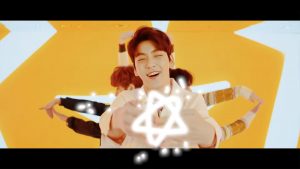
The use of CGI is initially quirky and delightful, but as soon as the first verse kicks off, the neon flashes outlining the members become distracting. Fortunately, the CGI eases up for the next couple of verses, but it hits again in the chorus, just as the viewer is supposed to be focusing on the key points of the choreography. The animated star and crossbow drawings in the post-chorus also tend to obscure the dance movements rather than visually support them. Think of the special effects as cherries on a cake: cherries are supposed to ornament the cake, but if you stick too much of them on, they are going to block your view of the cake.
The excessive use of CGI is not the only factor contributing to the visual confusion of the MV. There is also a lack of coherence between the chosen sets and accompanying camerawork. On one hand, there are box sets dominated by yellow and light blue following the colour scheme of the album art, including a dotted set that looks inspired by the art of Yayoi Kusama. Then there is a huge white room for the choreography sequences, with the boys dressed in light pastels. Most jarringly, there is a box set dominated by a race-car visual scheme, with black and white checkers and pops of red. Comparing screenshots of these sets yields the observation that they appear to belong to different MVs altogether.
But that is not all: the cinematography and editing escalate the unintentional visual chaos. The dotted set retains its colour, while a washed-out filter is applied to the checkered set. The white set with pastel clothing has a similar washed-out look, but with rosier tints. Then there are the red/blue brick-patterned sets which have a warmer, more yellow filter, and finally, the stop motion sequences which employ a vintage filter for a grainy, analogue look. The last of these choices, at least, can be justified as one of director Oui Kim‘s artistic signatures—some of his other works, like Zico‘s “Soulmate” and Eric Nam‘s “Who You”, sport a similar look. It is not the first time he has made use of cartoonish animated effects either; we see this in his MV for Oh Hyuk and Cifika‘s “MOMOM”. Unfortunately, in “Crown”, the combination of aesthetics is much less skillfully executed.
The mishmash of visuals is not just confusing; together with the over-usage of special effects, it diverts attention away TXT’s skilled performance, instead of highlighting it. It only takes a quick look at their live performance to realise the group possesses a level of energy and technical precision that the MV fails to quite capture. Another missed opportunity that their live stage spotlights is the content of the song. A short film screened before the performance tells the story of a boy who wakes up one day with horns on his head. Fearing that he has turned into a monster, he runs away, and finds a friend in a boy with wings.
Despite its childlike quality, this story, like so many allegorical stories in fairytales and children’s books, holds deeper meaning. The horns can represent a range of differences that hold us back from fitting in with others, and it is only when we meet someone who truly understands us that we learn to see these differences as unique and precious, like a crown. Even if TXT’s sunny, youthful concept may not appeal to certain audiences, this uplifting, affirmative message surely transcends those limitations.

However, with only sporadic animations of devil’s horns and antlers hinting at this story in the MV, and having no other elements to draw it out, the story loses its symbolic potential. Only the viewer who has seen the short film is able to appreciate the full value of the song’s lyrics. It is a huge pity, because it is this relatable message that sets the lyrics of “Crown” a cut above debuts with a similar cheerful, energetic concept, but often focusing on the theme of falling in love. (Cases in point: Astro’s “Hide & Seek,” Golden Child’s “DamDaDi,” and Seventeen’s “Adore U.”)
For all the missed opportunities of the “Crown” MV, though, the general outlook for TXT is promising. Several years in the making, their debut certainly shows signs of careful planning and a comprehensive understanding of how to stand out in the saturated K-pop market. Big Hit’s decision to combine a youthful, bright image with universal stories of growth ensures that TXT’s concept is differentiated from BTS’ niche despite drawing from it. While they are going down a well-trodden path, the refreshing, relatable content of their title track hints at potential for expansion and continuity without drawing on clichéd topics. Here’s hoping their next MV develops their potential, rather than obscuring it.
(YouTube. Images via Big Hit Entertainment.)
